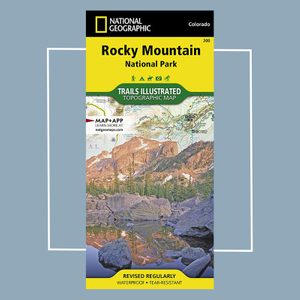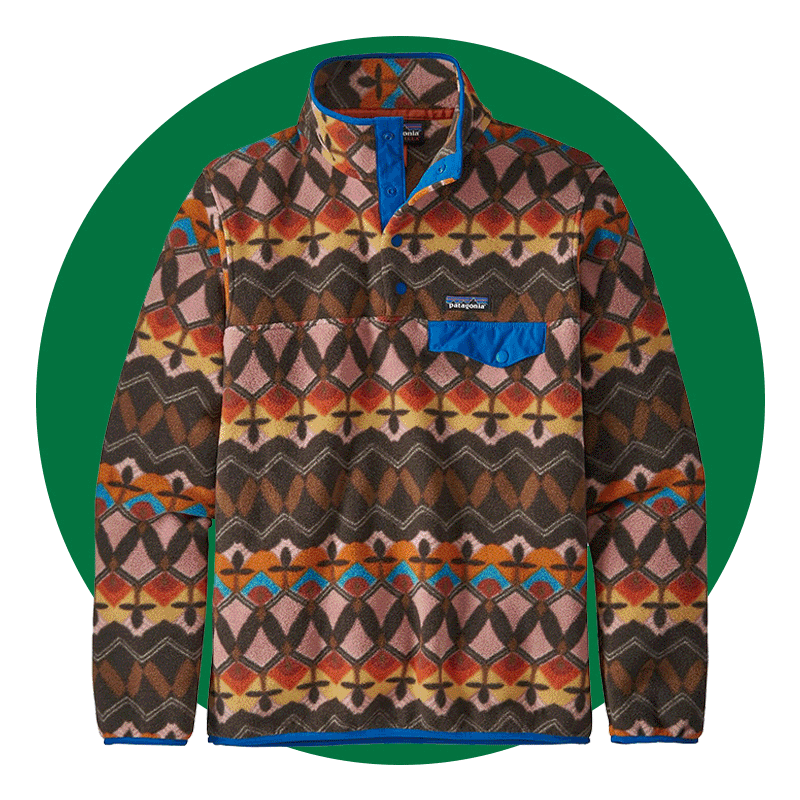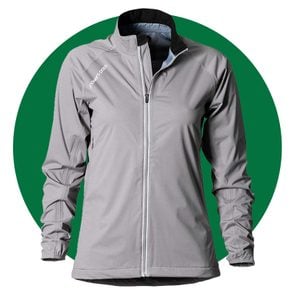8 Best Hiking Backpacks for Any Budget, With Tips From Outdoor Aficionados
Updated: Jan. 20, 2022
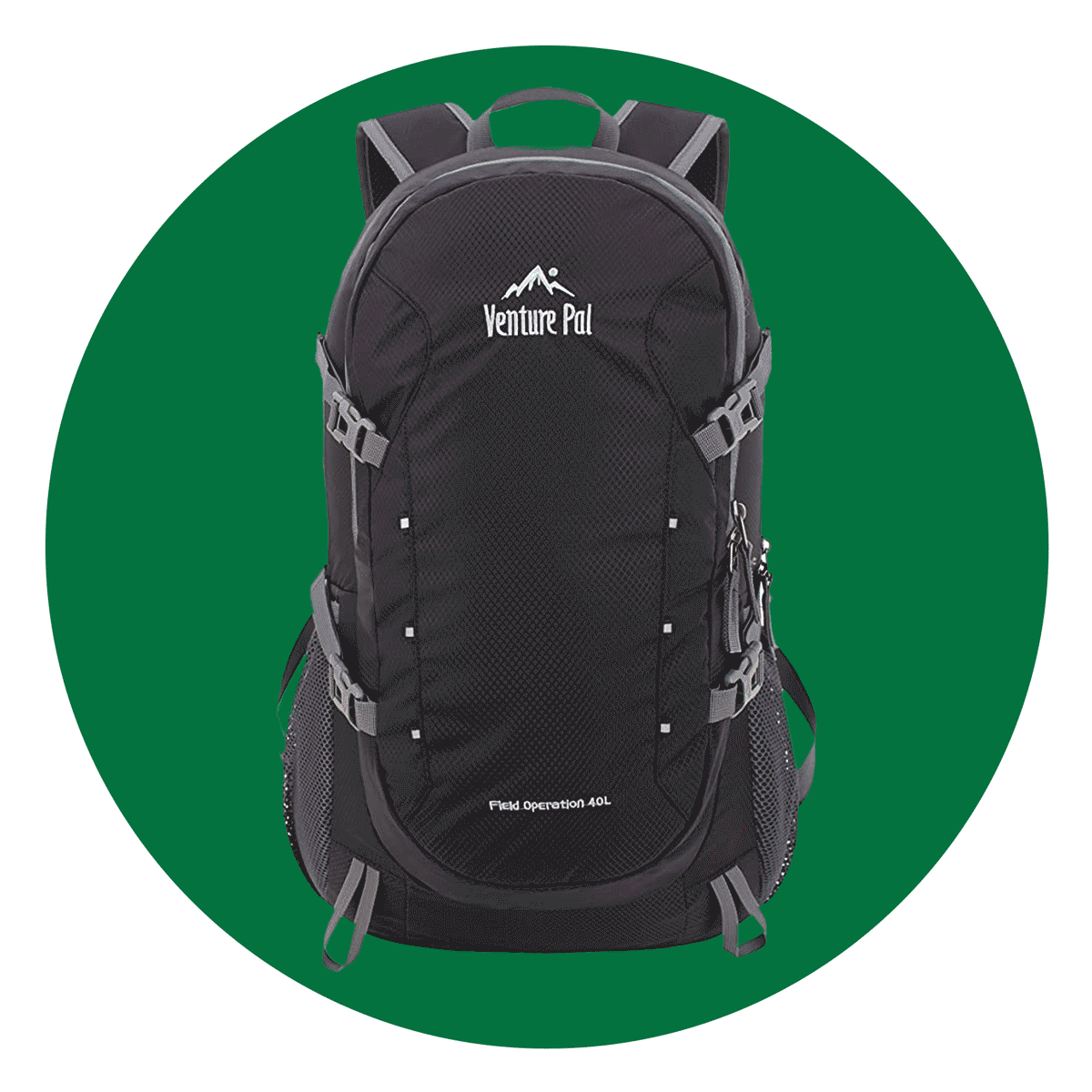
Hiking is a one-of-a-kind way to exercise and experience the great outdoors. Enthusiasts know having the right hiking backpack to haul your gear can make or break an awesome hike. Here are expert tips on how to choose the best backpack for you, whatever your budget or trail looks like.
Our editors and experts handpick every product we feature. We may earn a commission from your purchases.
This is your best backpack for hiking.
When you’re out hiking trails or through backcountry, your hiking backpack can be your biggest blessing… or, your biggest burden. You need a pack that holds all your hiking gear essentials so you can trek hands-free… but, you need that load to be as comfortable as possible.
Hiking enthusiasts from the American Hiking Society (AHS) offer encouragement: If you know what to look for, even your big, fully packed backpack can be surprisingly bearable.
If you don’t already have a suitable pack for the trip you’re planning, you might be able to rent or borrow one. Try walking around with some weight inside to make sure you won’t be in agony on the trail. Or, if you’re looking to invest in a new hiking backpack, there are some keys to keep in mind.
The first point is that when you buy your new hiking backpack is as important as the hiking backpack features you’re shopping for, suggests Wesley Trimble, communications and creative director for the AHS, who has hiked the entire Pacific Coast Trail and all 54 of Colorado’s 14,000-foot peaks. Trimble says one common mistake is to buy a hiking backpack too soon, before you have all the gear you plan to carry in it. “It’s the first item that comes to mind—the word ‘backpacking’ includes the word ‘backpack’—so people buy it first. But that isn’t strategic,” Trimble says.
For example: If you buy an ultralight hiking backpack and then fill it with lots of heavy, traditional backpacking gear, you might find yourself struggling to fit it all in. If you choose a larger pack to avoid that scenario, you might end up with a costlier, heavier pack than you need—with the added temptation to fill it with unnecessary gear since you have extra space. “I recommend the pack should be the very last thing you buy, so you can make sure it can accommodate all the gear you need for the hike,” Trimble says.
Once your gear is set and you’re finally ready to buy your hiking backpack, here are some tips to help you navigate the options and find the right pack for your back.
Need one last nudge to get out there? Read up on why hiking is so good for your brain.
What to look for in a hiking backpack
As with most outdoor gear, the best hiking backpack depends largely on who’s using it, as well as where, when, and how. It should fit your body well, but it should also be appropriate for the length and conditions of the hikes you plan to take.
If you’re in the market for a new backpack, these are some important qualities to consider:
1. Fit and comfort
“The key feature when picking out a backpack is making sure the fit is right,” Trimble says. “Everyone has a different torso length, and most packs are designed for specific torso lengths. Some packs are adjustable to a certain degree, but others are not very adjustable.”
Make sure the hip belt fits comfortably and securely around your hips, too. Hip belts help transfer some of the backpack’s weight from your back to your hips, and research suggests they may help stabilize the backpack closer to the body’s center of motion, leading to “a more natural motion pattern” and possibly reducing the risk of injury. Don’t settle for a backpack with an ill-fitting hip belt. Trimble notes some manufacturers now offer plus-size backpacks with slightly longer hip belts.
Many hiking backpacks are marketed for either men or women, but that is one distinction you can disregard, according to Kate Van Waes, PhD, the executive director of the AHS. “Backpacks, especially bigger ones, can come in binary genders, even though everybody doesn’t come in binary genders,” Van Waes says. “So go with the pack that fits your body the best, regardless of whether it’s labeled for men or women.”
It may be fine to buy a backpack online if you have some backpacking experience and know your torso length, but many experts suggest buying it in person if possible, especially for beginners. Many outdoors retailers that sell backpacks will also help measure your torso length in the store.
(Now might also be a great time to try a few new back stretches.)
2. Carrying capacity
Consider what all your gear will weigh and how much space it will take up inside your backpack. It’s generally better to aim for the smallest, lightest pack that can carry what you need—another reason it’s good to have the majority of your other gear picked out before you buy a new hiking backpack.
Ideally you want a pack that’s just right for your next hiking trip, while also versatile enough to work for longer or more challenging trips in the future. That’s great if it helps you get outdoors and hike more often, but it’s still smart to be conservative, especially if you’re new to backpacking. “It’s tempting to say, ‘I’ll get the bigger size in case I want to do a bigger trip in the future,’ which is a good idea, but unfortunately for a weekend trip it might mean you carry more weight than you need or would like,” Trimble says.
One more reason not to automatically buy the biggest hiking backpack? “[…Y]ou’re more than likely to fill the backpack and carry more than you need,” Trimble says.
Don’t go too small, though. Even for day hiking, your pack should have room for the essentials, Van Waes says. Level up to an internal-frame backpack for overnight trips, requiring at least 30 liters (eight gallons) of space, or sometimes more than 50 liters (13 gallons) for several nights. You’ll need additional space for longer hikes, to accommodate food and other supplies, or if you’re hiking in winter, since cold-weather gear is bulkier. And regardless of how far you’re hiking, you’ll probably need extra space in your pack if you’re hiking with kids.
As if you needed more motivation, check out 16 Hiking Quotes To Get You Inspired.
3. Backpack weight
An ultralight backpack is great if you have ultralight gear, but you’ll need a bigger—and heavier—pack if you’re bringing more traditional equipment, or if you want some extra comforts and conveniences. Heavier packs typically have more padding, but make sure you’re up to the challenge before committing to one.
Some ultralight backpacks are just two or three pounds, while heavier-duty options can weigh twice as much. That might not sound like a big difference, but it will feel like it after days on the trail.
Another smart way to prep for your hike: Try these four exercises for upper-body bone strength.
4. Storage and organization
It’s easy to go down a rabbit hole of various zipper-pocket arrangements as you shop for hiking backpacks. There are many different options, but as long as a pack fits well and has enough space for your gear, the exact layout of storage compartments generally isn’t worth obsessing over.
That said, the convenience of a well-placed pocket can improve your experience on the trail. Some people like accessible storage features on the hip belt or shoulder straps, while others prefer a more minimalist, centralized setup. “It’s just a matter of personal preference how it’s laid out so you can organize your stuff in there. So you want to look at that just as you would with any other bag. Make sure it has the pockets you want where you want them,” Van Waes says.
Be sure to think about where you’ll keep your water, too. Whether you use a bladder or a bottle, your water should have a prominent and easy-to-access place on your backpack to help you stay hydrated.
5. Water protection
Some water protection is common in backpacks, and it’s often a good idea even if you aren’t expecting rain or snow. You don’t want a surprise storm to drench all your supplies inside your pack.
That said, the importance of water protection does vary by climate and season, and it might be unnecessary if you’re hiking through a desert in the dry season. If you expect wet conditions, you may want a rain cover for your backpack or some kind of waterproof compartment inside. Our list of waterproof jackets may also come in handy.
6. Ventilation
Backpacks stay close to your body as you hike, trapping heat and promoting sweating. That’s just part of backpacking. But while some back sweat may be inevitable, there are ways to reduce the excess heat responsible for it. Wearing thin, loose-fitting clothes can help in warmer weather, and many backpacks also feature breathable materials and mesh ventilation to increase airflow. Some backpacks with special ventilation-focused designs, such as a suspended mesh backpanel, increase airflow at the expense of storage space.
7. Hiking backpack cost
You could spend $300 or more for a high-end internal-frame hiking backpack. While you might get what you pay for, there are many good options at significantly lower prices, too. Most of the top-rated internal-frame backpacks from popular brands range between $150 and $300, but some cheaper packs are also perfectly fine for many hikers’ purposes.
Daypacks can range in price from less than $20 to more than $200, depending on size, materials, capacity, and weight. As with overnight packs, think about how you want to use your daypack (in what conditions, with what inside it), and try to find the smallest, lightest option that fits your needs and budget. If you’re looking for both a daypack and an internal-frame backpack, note that some of the latter come with their own removable daypacks.
The best hiking backpacks
While there is no universal “best backpack for hiking,” there are many great backpacks for various situations and budgets. The best backpack for you depends on your own plans, preferences, and body shape. Here are a few highly regarded backpacks that are well-suited to a range of scenarios:
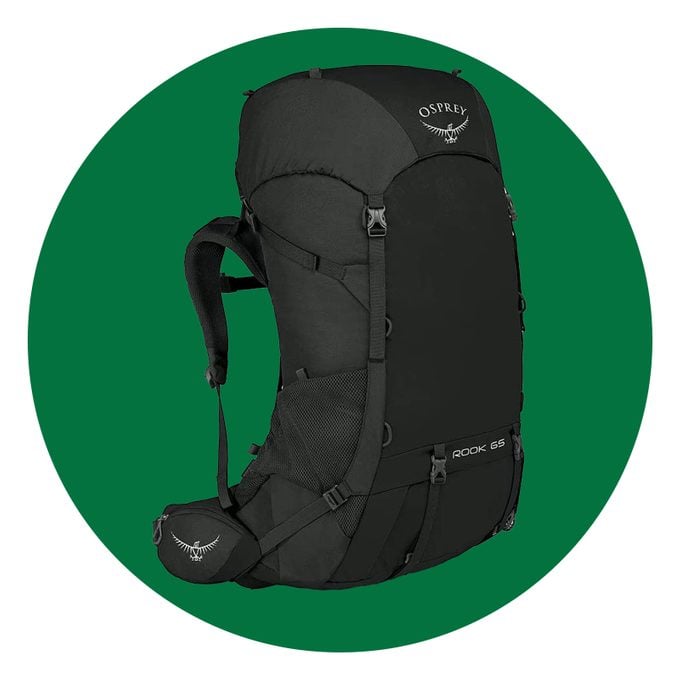
Osprey Rook 65
$165
Osprey is a titan of the backpack market, with many popular packs like the Aether, Exos, and Atmos that provide large capacity and/or low weight for longer hikes. Like many high-quality hiking backpacks, however, they also tend to cost more than $200.
Fortunately, Osprey also offers the more affordable Rook 65, which boasts a 65-liter capacity, weighs 3.5 pounds, and costs $165—a relatively low weight and price for so much storage space. For more comfort, there’s also the highly touted Atmos AG 65 from Osprey, which costs $100 more than the Rook but comes with a suspended “Anti-Gravity” back panel for superior ventilation.
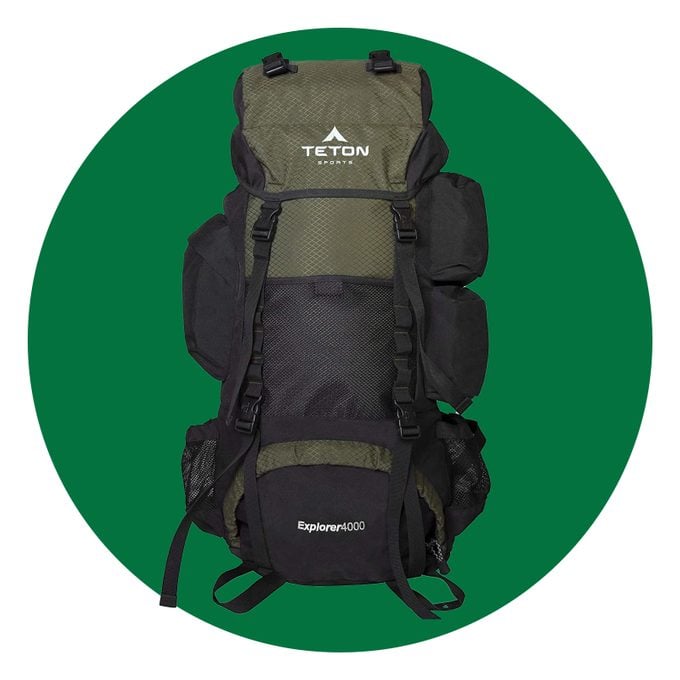
Teton Sports Explorer 4000
$85-$142
If the Osprey Rook still doesn’t fit your budget, you might want to consider the Explorer 4000 from Teton Sports. This five-pound hiking backpack has 65 liters (4,000 cubic inches) of storage capacity, and is great for three- to five-day backpacking trips.
But the most notable thing about the Explorer 4000 is its price: Starting at just $85, it’s substantially cheaper than the other packs on this list. And while it may not rival the features or overall quality of pricier packs, it does have a 4.5-star rating on Amazon with more than 6,000 reviews, many that praise its durability and toughness in addition to its price.
(Planning for a healthy year? Check out these 10 easy self-care swaps you can make right now.)
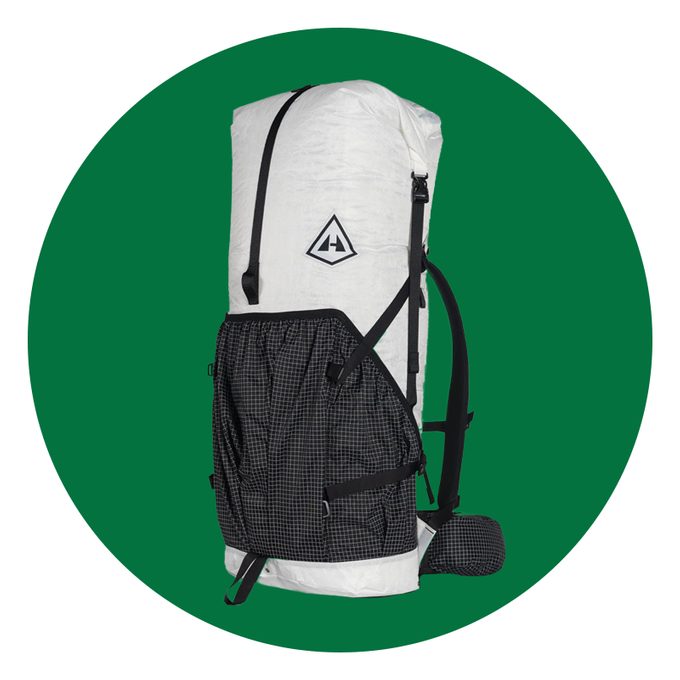
Hyperlite 3400 Southwest
$284
The 3400 Southwest is the most expensive option in this list, but it’s renowned for its ultra-low weight (2.18 pounds for black, 1.98 pounds for white, according to Hyperlite), plus durability and carrying capacity. Despite weighing only two pounds, it offers 55 liters of storage space (or 3,400 cubic inches, as its name suggests). That means it can haul enough stuff for an adventurous weeklong trek, but it’s also lightweight enough for shorter weekend hikes (even if you don’t need all 55 liters every time).
If you have $355 to spend on a hiking backpack, this one warrants consideration.
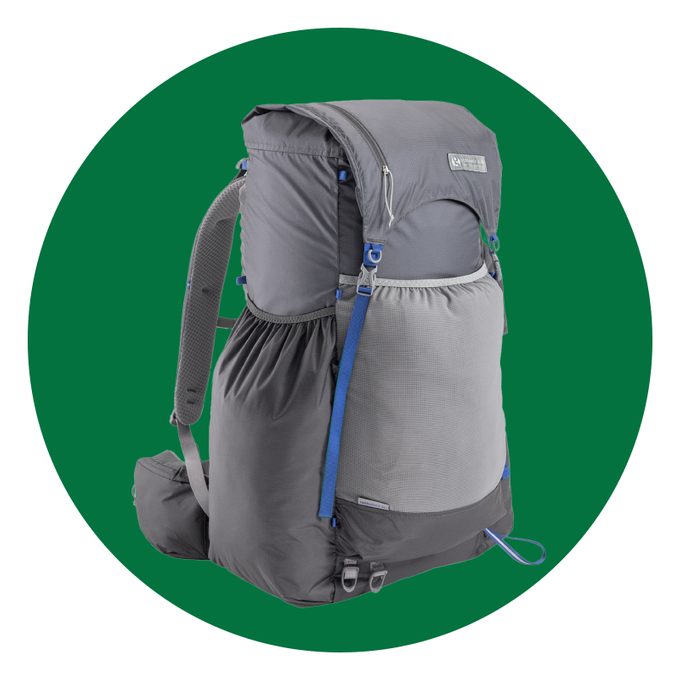
Gossamer Gear Mariposa 60
$270
Another popular ultralight pack is the Mariposa 60 from Gossamer Gear, based in Austin, Texas. It has a similar capacity (60 liters) and weight (two pounds) to those of the Hyperlite 3400 Southwest—but at a significantly lower price of $270.
The Mariposa 60 offers seven external pockets (compared with three on the 3400 Southwest), and its Robic nylon material resists rips and punctures without adding much weight or cost (although it lacks water resistance). It also comes in three sizes to accommodate different body types, and you can order a small, medium, or large adjustable hip belt—with integrated pockets—for an optimal fit.
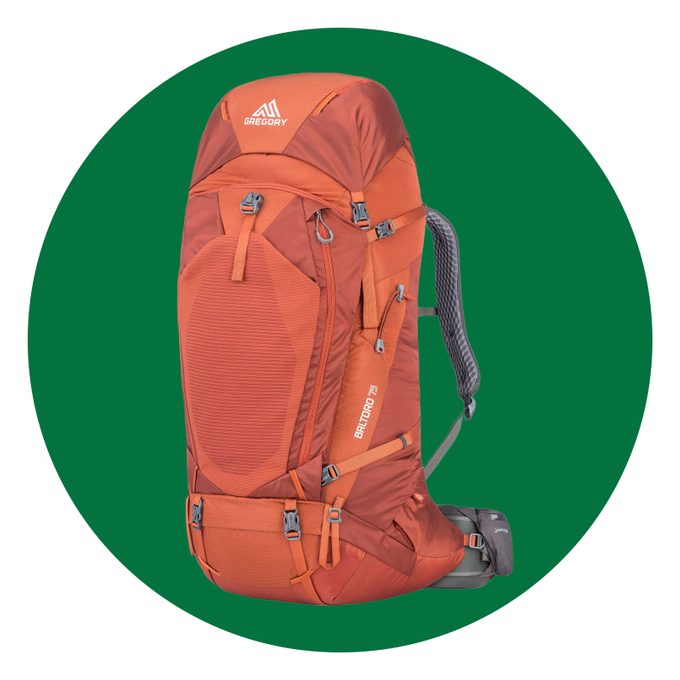
Gregory Baltoro 75
$329
The Baltoro 75 is “designed to be the ultimate multiday backpacking pack,” according to Utah-based Gregory Mountain Products. It weighs 4.83 pounds and can hold 75 liters, making it perfect for longer hikes. Plus, it remains comfortable even with heavy loads.
The Baltoro has a breathable foam back panel for ventilation, plus strong suspension, padding, and other features to help it carry weight with less discomfort from pressure or hot spots. It comes with a rain cover and a removable hydration sleeve that doubles as a daypack, and its nine external pockets include a water-resistant hip-belt pocket for quick phone or camera access. (Here are a few snacks to stay hydrated.)
The Baltoro is officially priced at $330, but keep an eye out for markdowns: It has been listed as low as $250 by Gregory or even $165 at REI.
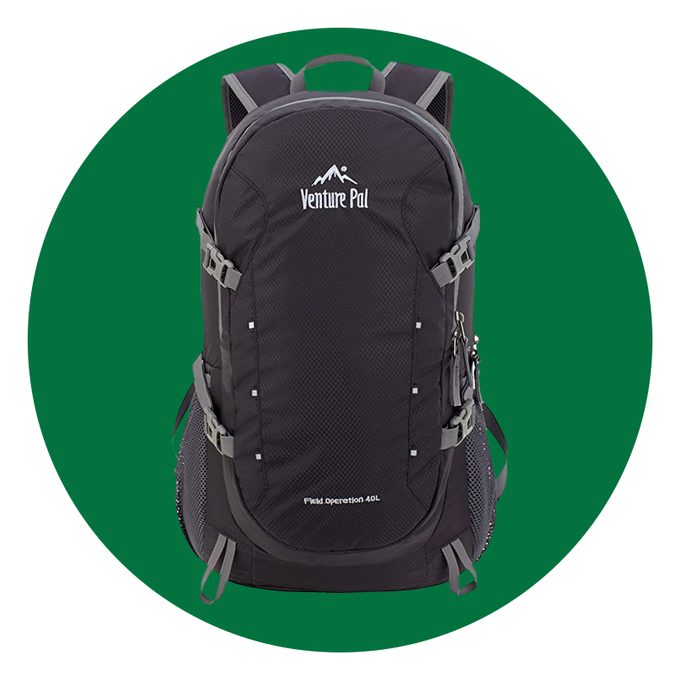
Venture Pal 40L Lightweight Daypack
$19
There are many high-quality daypacks out there, some of which cost as much as a decent internal-frame backpack. Those might be a better option for frequent use with relatively heavy loads, but in many cases a cheaper daypack will suffice. If you just want to get in the habit of hiking regularly and need a simple, serviceable daypack, this compact 40-liter pack might interest you.
It weighs just 0.7 pounds, and while it may not be the most durable or comfortable daypack, it features tear-resistant and water-resistant nylon fabric. There is one main zipper compartment, one front zipper pocket, and two side pockets, along with one waterproof wet pocket in the main compartment.
It also costs just $24, and has a 4.5-star rating on Amazon from more than 24,000 reviews.
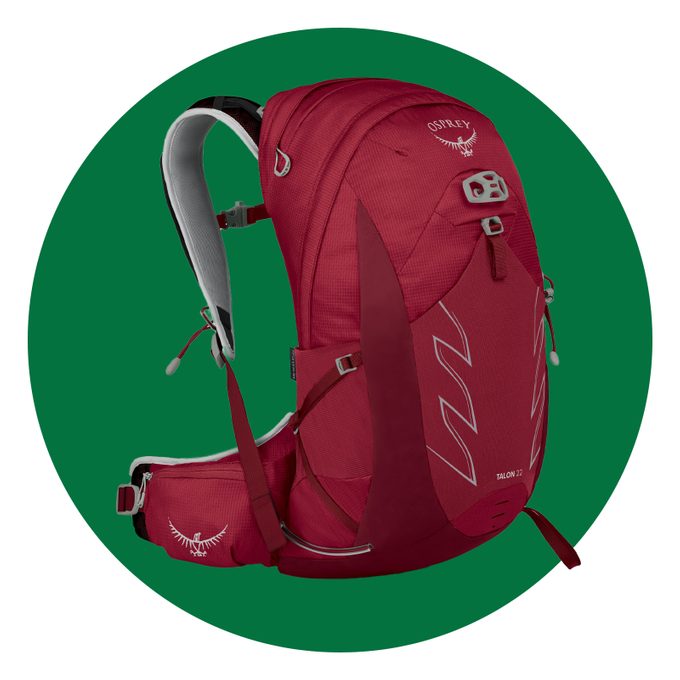
Osprey Talon 22 Daypack
$135
If you’d prefer a more durable, comfortable, and supportive daypack, consider the popular Talon from Osprey. Its $130 price is about five times the budget daypack from Venture Pal listed above, but it’s still cheaper than many other high-end daypacks, including the Osprey Stratos. The Talon 22 has a storage capacity of 22 liters, but Talon daypacks also come in sizes of 11, 26, 33, 36, and 44 liters.
The Talon has a mesh back panel and a hip belt (plus hip-belt pockets) with padding, elevating it above many cheaper, less supportive daypacks. It offers six external pockets in addition to the main compartment, lots of attachment points for various gear, and it comes in two sizes to help you find a good fit. If the Talon still seems too pricey for a daypack, you could try the more affordable Daylite Plus, also from Osprey, which is roughly half the price of the Talon 22.
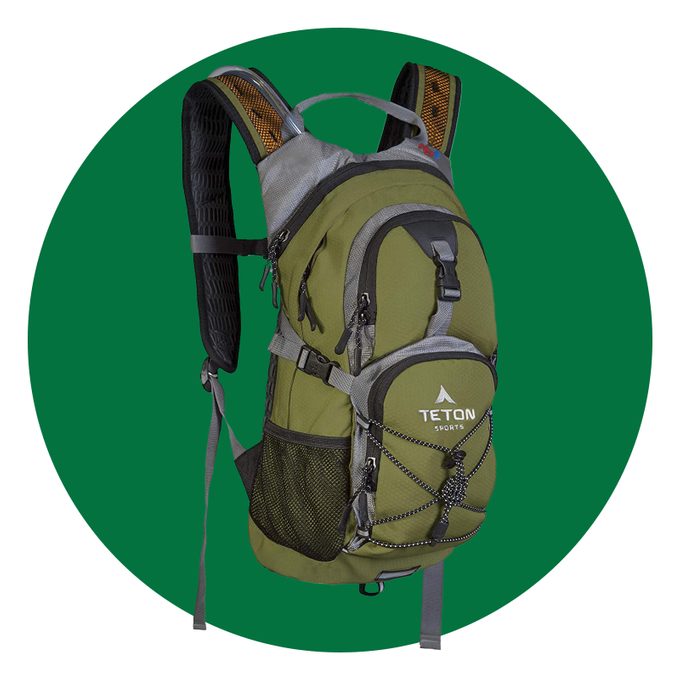
Teton Sports Oasis 18L Hydration Pack
$40
This lean, 18-liter pack from Teton Sports will help you stay hydrated on day hikes, and offers some nice storage compartments for things like snacks, a phone, flashlight, or other small gear. It comes with a removable 2-liter hydration bladder, integrated rain cover, and multiple compression straps to help tighten your pack for reduced bouncing while you hike. A mesh back panel provides some ventilation, and there’s a waist belt that can expand up to 60 inches. The storage capacity is a little small, but it can work well for most day hikes. It’s also relatively lightweight at just 2 pounds, and costs less than $50.
For more wellness wisdom, keep reading:
9 Signs You’re Drinking Too Much Water
Brooks Walking Shoes Are the Only Walking Shoes This Podiatrist Recommends
The Banana Health Benefit You for Sure Weren’t Aware Of, From Dietitians

